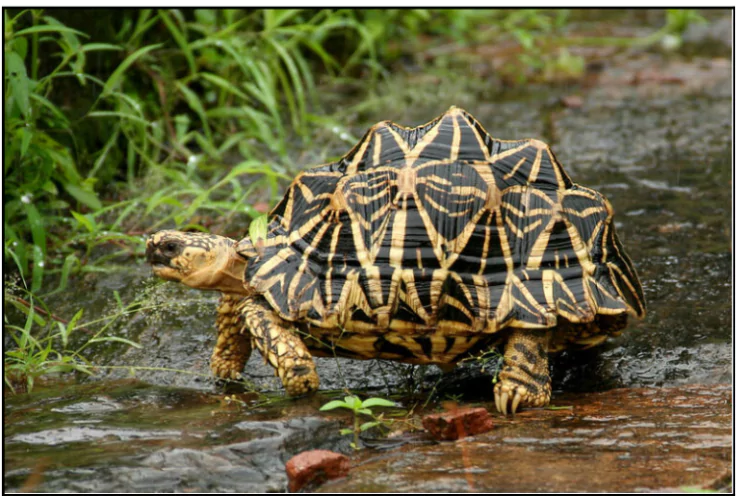Despite conservation efforts and vigilance for Indian Star Tortoise , officials have seized hundreds of tortoises being smuggled through the Chennai and Singapore airports and across the India-Bangladesh border.
About Indian Star Tortoise

- The Indian star tortoise (Geochelone elegans) is distinguished by its obsidian shell with striking Sun-yellow star patterns.
- They are popular as exotic pets. However, owning them is illegal in India and considered unethical due to their vulnerable status in the wild.
- Habitat: The Indian star tortoise inhabits dry and open environments such as scrub forests, grasslands, and rocky outcroppings.
- Geographic Distribution: Central and Southern parts of India, West Pakistan, and Sri Lanka.
- Threats:
- Habitat Fragmentation: Urbanization and agricultural activities have led to the fragmentation of their habitats.
- Loss of Genetic Diversity: Hybridization poses a significant threat to their genetic diversity.
- Illegal Trade: According to the Wildlife Crime Control Bureau, 90% of the trade involving the Indian star tortoise is linked to the international pet market.
- Genetically Distinct Groups: A study by the Wildlife Institute of India and Panjab University identified two genetically distinct groups:
- Northwestern Group: Relatively unchanged genetically.
- Southern Group: Displays high genetic diversity.
- Genetic divergence between these groups is traced back approximately 2 million years, driven by climatic changes and the division of humid and arid regions.
- Food Habits: Indian star tortoises are herbivores, feeding primarily on plant material.
- Activity Pattern: This species is diurnal.
- Conservation Status
- IUCN Status: Vulnerable
- CITES Listing: Appendix I
- Wildlife Protection Act 1972: Schedule IV
Enroll now for UPSC Online Classes
Conservation Challenges
- Unscientific Releases: Mixing individuals from distinct genetic groups could lower diversity and reduce breeding rates.
- Captive Issues: Shell pyramiding, caused by nutritional deficiencies in captivity, complicates breeding.
- Awareness and Law Enforcement: Lack of public awareness about illegal ownership and adherence to wildlife laws.
![]() 9 Dec 2024
9 Dec 2024


